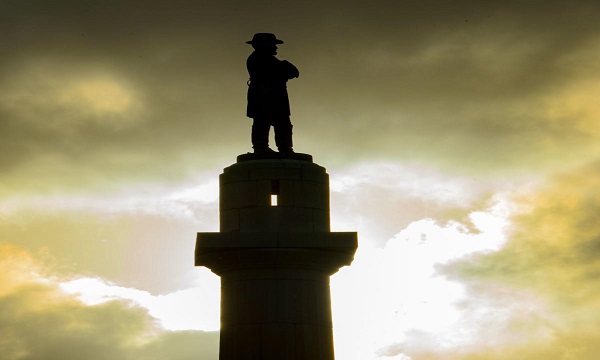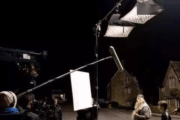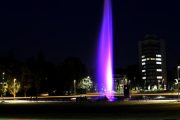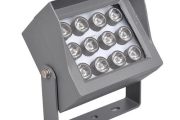 When you visit museums, parks, or recreational sites, you can often find a monument or statue. These statues and monuments do not sit in the dark when the sun goes down, but are illuminated. The same dramatic, romantic, or even uplifting feeling can be achieved by lighting a monument or statue in your own yard.
When you visit museums, parks, or recreational sites, you can often find a monument or statue. These statues and monuments do not sit in the dark when the sun goes down, but are illuminated. The same dramatic, romantic, or even uplifting feeling can be achieved by lighting a monument or statue in your own yard.
Small statues or larger statues or monuments?
With small statues, it is possible to achieve an effective result with a single fitting, but this should have a narrow-beam and preferably be located above and to one side of the object. This will help to create strong, dramatic shadowing and avoid glare to passers-by.
Larger statues or monuments will invariably require more than one luminaire – these should be used to reveal different parts of the object, but be careful not to cancel out the shadows from one fitting by another. The impact of a carefully illuminated statue is often defined by the creative use of shadows.
Brightness is a key issue – floods or spots that are too powerful will bleach out the statue’s details. In most cases, it is useful to do a trial or mock-up, using different wattages, beam angles and positions.
How to light a monument or statue?
You must first decide what part of the statue or monument you would like to illuminate. For instance, if it stands against a wall or tree line, you could use light to create a shadow in those areas. If you would like to distribute equal light, then you would place the fixture in the middle at the base of the statue and shine the light almost straight up. If you would like to focus on illuminating just one element of the statue, then you would place the fixture directly on that part of the statue.
1 Decide the highlight part
The most important aspect of statue and monument lighting is to decide where you want the eye to focus to in regard to light fall. Light naturally directs the eye where to look and can be used to highlight select aspects on purpose to achieve the desired result. For example, lighting can be placed to help create shadows behind the statue itself for a moody, dramatic ambiance, or a mix of lighting directions can be used to eliminate shadows to create a friendly appearance. You also want to consider whether to use primarily uplight or downlight. With downlight, you cast the light from fixtures placed overhead which can create gentle shadows on the ground. Uplight can help reduce shadows on the ground, but it can make certain statues look too harsh. The type of directional light spread that is best for your statue will depend on the lines of the statue itself. For instance, a statue with mostly rounded or softer lines can use both types of lighting direction, but a statue with stark or sharp lines throughout may appear too harsh or foreboding with the wrong directional lighting choice.
2 Choose the direction of the lights
When apply light to shape these monuments during dark, it is not only the light’s angle of incidence that is relevant but also its direction is important. A frontal light, by which the direction of the light is the same as the observer’s viewing direction, will produce a low modelling effect. A shadow will be barely noticeable and the three-dimensional objects will appear flat.
Conversely, a light from the side of the sculpture will produce very strong contrasts between light and shadow with an intensive three-dimensional effect for the viewer. Similarly, an overhead light, whereby the light is incident on the object from directly overhead, greatly highlights the upper surfaces of the object but often causes the sides disappear into the darkness and casts a spotlight circle on the ground.
Backlighting with a light source behind the object casts a long shadow towards the observer, leaving the object as a dark profile with just a thin border of light outlining the upper contours. Floor lighting illuminates sculptures from underneath and often gives an uncommon effect because the direction of light is the opposite to that of daylight. These effects not only hold true for sculptures or monuments but are also relevant for object lighting in general way.
3 Consider light pollution
Whether you are lighting an individual statue in your backyard or a larger statue in a park for public enjoyment, the matter of light pollution is crucial to success. Light pollution can be a big concern for neighbors since it can disrupt their sleep by shining into their windows. The best way to reduce light pollution is to make sure the scope of illumination doesn’t spread to nearby windows. You should also pay attention to the surfaces where light spread falls since a reflective surface has the potential to create light pollution despite the direct light scope being cast away from windows.
Requirements for outdoor lighting:
All outdoor lighting must meet special requirements that indoor lighting does not. The requirements can be easily accommodated once you know what you are looking for.
Low volage light is safer
You will need low voltage from 12V to 24V rather than the standard 120V for indoor lights. The reason for this is safety. Outdoor lights will require a transformer, and all outdoor lighting will need to take the overall amount of voltage into account.
Wroking temperature is important
Next, if you live in an area that has freezing temperatures, even for a short time, you will need lighting fixtures that can survive at or below freezing. Even waterproof fixtures like fiber-optic outdoor lighting should be checked for winter readiness.
Monument or statue illuminating come in a wide selection of lighting fixtures, from warm white to bright daylight, and even have color-changing options as well as varied beam angles. Tachyonlight offers high quality and energy saving LED lights. Our professional engineers also will be happy to help you select the perfect lighting option for your statue or monument.










